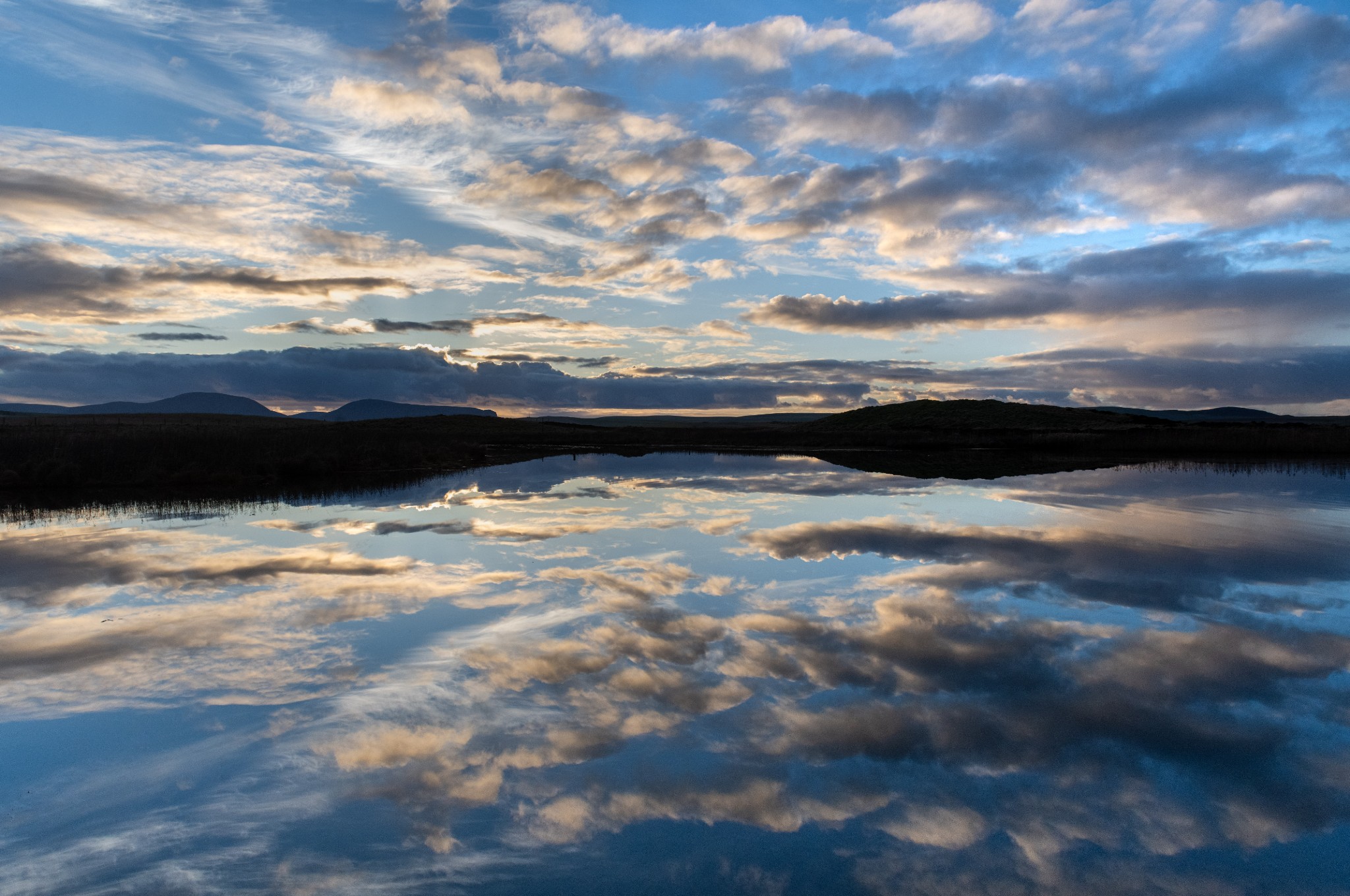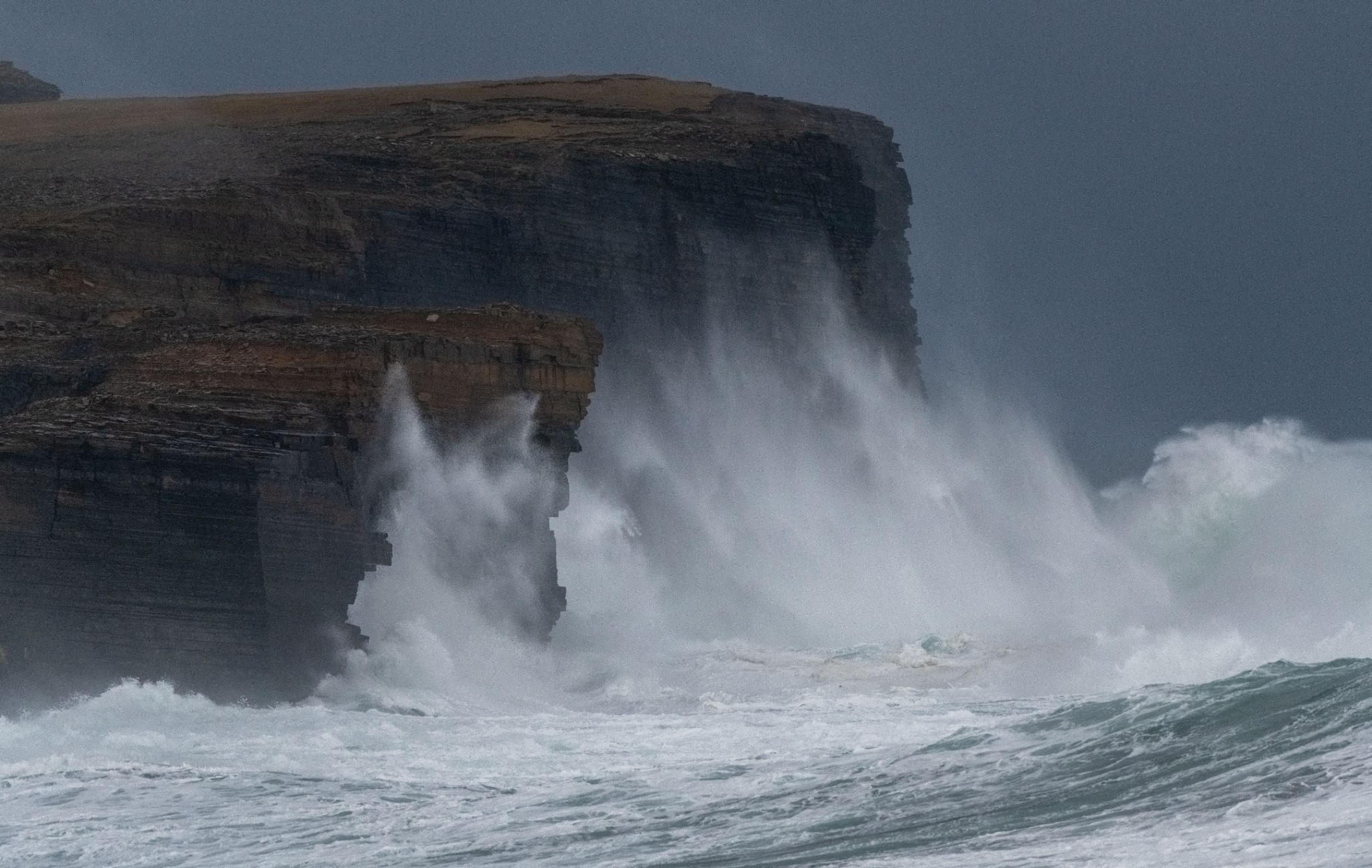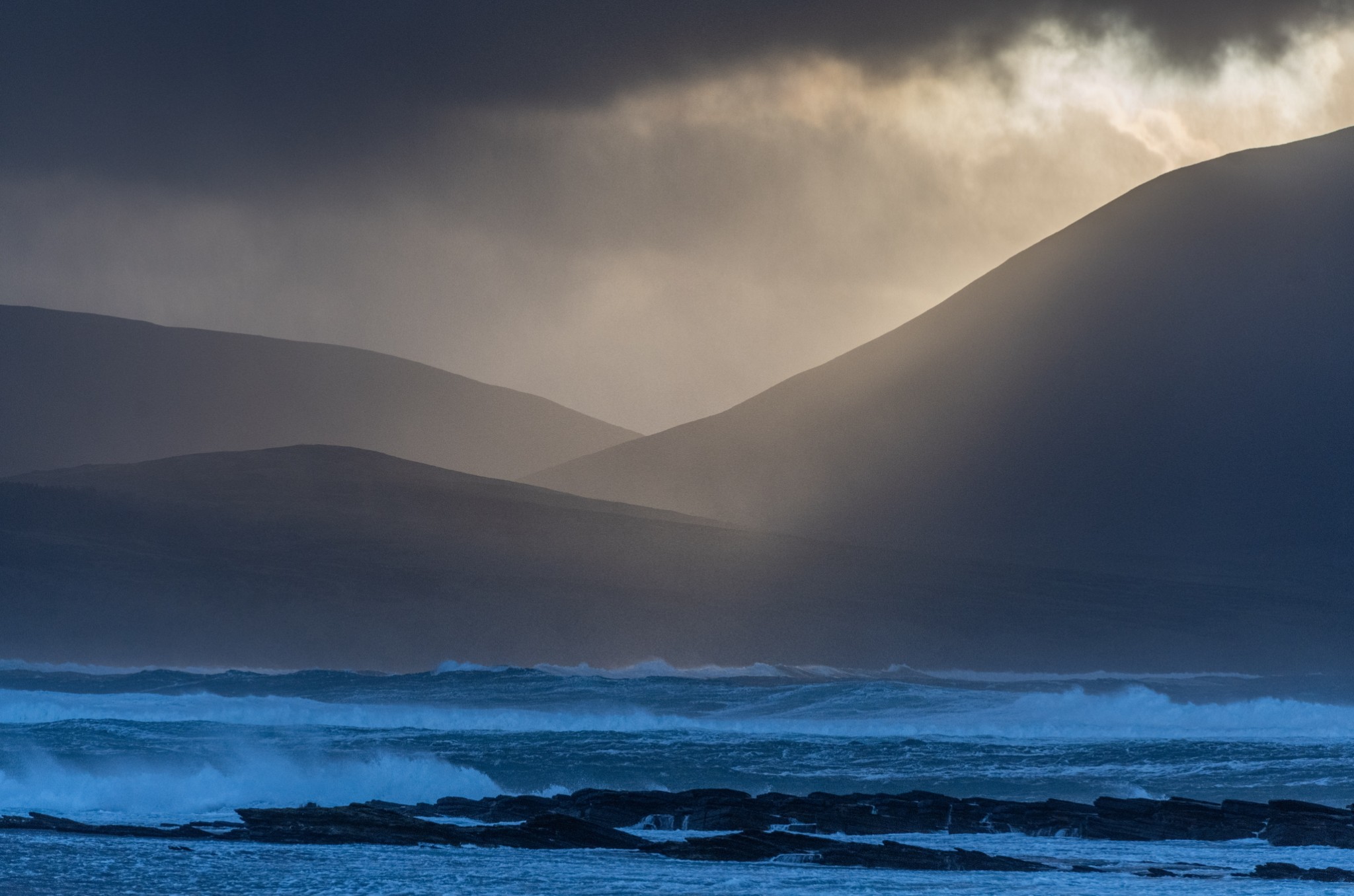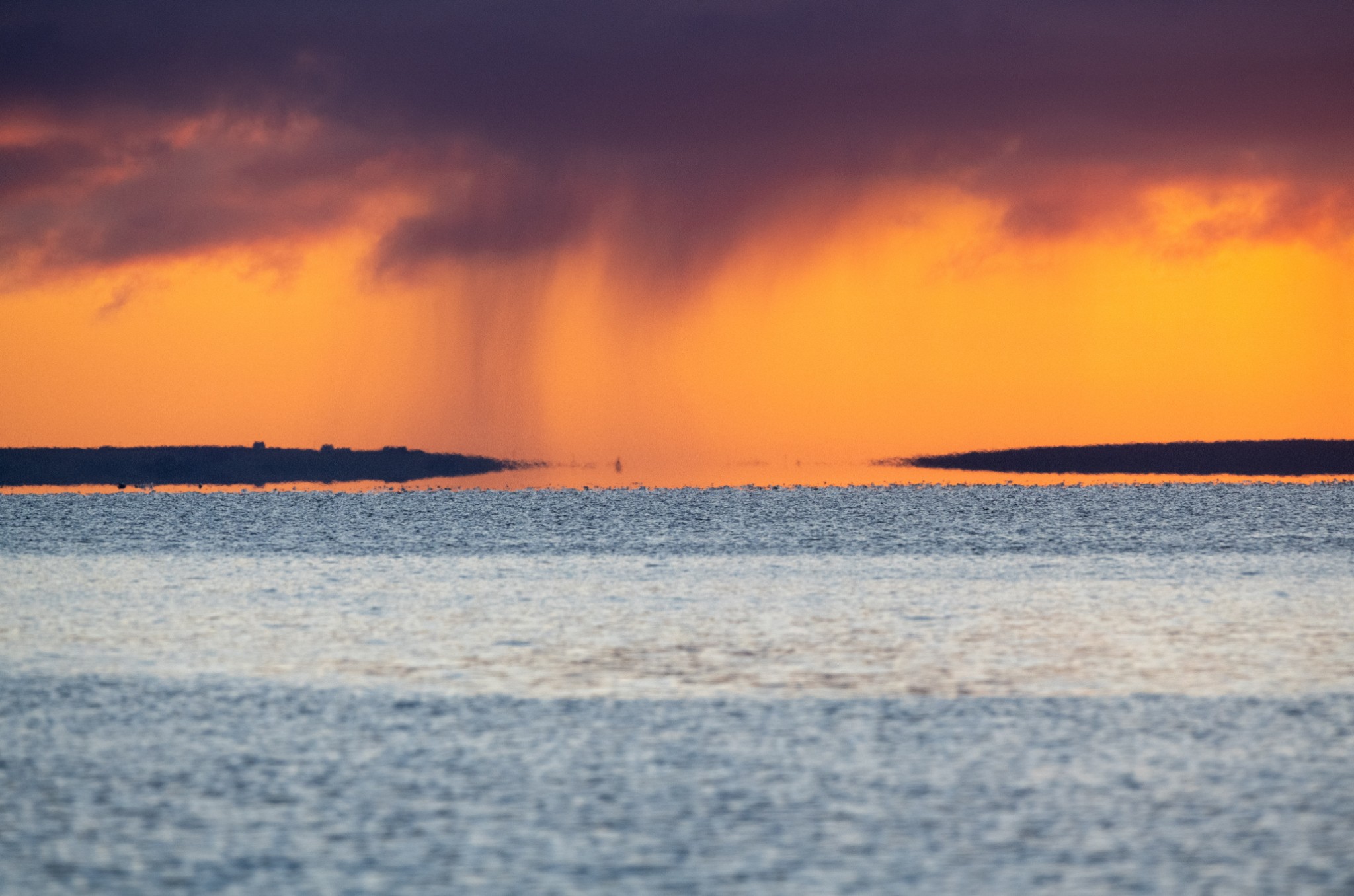The conditions for land and seascape in Orkney over the last month have been very varied - at times exceptional - and it’s those exceptional days that make the not so good days more palatable.
This immediately throws up a question, however. We are of course in the midst of winter so what constitutes a ‘bad day’, when the conditions I might be looking for are high winds, big seas and dark skies?
Relentless easterly winds have finally given way to some prolonged westerlies and the promise of big seas born in the Atlantic. However, we aren’t at the mercy of low-pressure weather systems every day. In fact, we’ve been treated to some spells of very settled weather too, so settled in fact that water bodies, both inland lochs and the sea, have at times been mirror calm.
One thing that’s often overlooked is how we can best dress to suit these conditions. For me this boils down to how long can I stay comfortable outside. We want to be able to take advantage of the opportunities in front of us and we are far more likely to call it a day when we are cold and hungry. I’m realistic though and certainly have gone home from being too cold! There are many factors that feed into why this might happen.
I made quite a big mistake whilst filming otters in Shetland last year. In some ways filming otters in winter presents an unusual set of circumstances to deal with in terms of clothing, but worth exploring all the same. Myself and wildlife guide Brydon Thomason were filming an otter family on the north mainland coast in January where the temperature hovered around 2 or 3C with a northerly wind blowing and clouds depositing frequent hails showers. So, it was cold and I dressed for what I thought what was appropriate for the conditions.
The problem with filming otters at close quarters is the constant battle against their excellent senses, their sense of smell in particular. This means staying down wind of them and ideally retaining cover behind you. You can spend a lot of time waiting in one place and the next running along the shore (when the otter is underwater). Having almost over-dressed in order to stay warm whilst stationary, it doesn’t take long to overheat when mobile and carrying an exceptionally heavy camera and tripod.
Hands and feet are the hardest areas to keep warm. I find ski glove-style gloves are the warmest but the long lens I use to film the otters needs precision technique in order for me to keep things in focus. I can’t do that with those thick gloves. Fingerless gloves with a mitten hood can be a good compromise but I find once I have cold fingers, it’s difficult to get them warm again. A warm cup of coffee helps in this regard but again might not always be realistic when conducting field work with otters. Hand warmers can help but I try to do without them because of their disposable nature.
Anyway, the mistake I made was with my feet. The shore in winter is often strewn with rotting kelp and not very kind on walking boots, so I wore wellies. Having found ourselves close to the otter family which had decided to go to sleep nearby, our options for movement were very limited. We certainly couldn’t jump up and down or ‘swap the scarf’ as Shetlander Brydon calls it - a scarf or scarfie is a northern isles name for a shag or cormorant which stretches its wings out in order dry itself. Stretching your arms out and whacking them around yourself (the swap or swapping part) would keep me warm but would likely alert the otters too!
Hunkered down on the shore on a cold and wet kelp bank and unable to move, I could feel I was getting increasingly cold. I had already lost the feeling in my toes but having had this before I thought I could shake it off once I got back to the car.
I was wrong however and it was only when back at the warmth of my accommodation that the feeling returned. I shouldn’t have ignored it; once the blood was back in my toes, they throbbed something terrible and when back in Orkney thick skin developed over my increasingly red toes. I had frostnip, which the NHS describes as the early stages of frostbite.
It’s served as a good reminder to take the winter conditions we have in Scotland seriously. On an average, moderately cold winter day you might need to do little else other than put on a good hat, scarf and jacket and you’ll be perfectly fine.
When I’ve been out photographing in the recent calm but very cold conditions and the even more recent very windy and cold conditions, I more or less wear the same set of clothes with a few amendments to suit each. Ideally, we want to be both waterproof and windproof and I hate having so many layers on that my mobility is compromised.
I’m not sponsored by a particular clothing company and although there are brands that I like I don’t have loyalty to one in particular, I mostly just like a piece of clothing that works and lasts. In reality though if a piece of waterproof clothing is used regularly and in poor conditions it will eventually lose its waterproof qualities. I think this is especially true in Orkney where salt spray hastens the demise of outdoor clothing. I’ve had mixed results with putting them through the wash with re-proofing liquids, I find it works to an extent and does prolong the garments life, but at this stage it feels like a losing battle.
In the recent wet and windy weather where I’ve headed to Skaill and Warbeth to photograph big seas I’ve worn the following items in the knowledge that it’s going to be windy and I’m likely to get caught in some nasty winter showers.
On my feet there are Salomon hiking boots, and I also have a set of merino top and long-john base layers. If I know I’m not going to be walking very far I’m happy to wear a pair of jeans with a set of Mountain Equipment waterproof over trousers on top. Cotton however is one of the sins of outdoor clothing as they rapidly absorb moisture.
I kneel a lot, especially when filming, and no off the shelf waterproof garment is designed to withstand prolonged exposure in mud and water - it’ll get through fairly quickly. I will occasionally use fishing waders if I know I’m going to be doing this or kneeling in a cramped hide for prolonged periods. Recently however I have been wearing my base layer, a pair of light walking trousers and then a pair of insulated trousers made by Haglofs, which are more or less a salopettes-style trouser.
On top I wear my base layer, then either a medium fleece or woolen jumper with a medium insulated jacket. My favourites are the Nano Air hoody by Patagonia which I’ve had for a long time and a similar jacket by Arcteryx. This is a nice light set up, and combined with a buff or snood and my beanie from Montane, this will keep me warm whilst on the move.
When it’s very windy however there is likely to be a significant wind chill factor and so I wear a heavier insulated jacket by Montane which is 10 years old. The main zip has been replaced on it but otherwise it’s still my ‘go to’ jacket for cold conditions. My current ‘shell’ jacket is one by Revolution Race, a brand I haven’t used before so we will see how long it lasts. It replaced my old green Montane shell jacket which I now use to throw over my camera when it starts raining. In the calm colder conditions where I know I’m going to stay dry I replace the shell jacket with a heavier insulated or ‘puffy’ jacket made by Rab.
As to the question of what constitutes a ‘bad day’, in terms of weather I’ve been trying to change my mind set a little. At Warbeth the conditions were challenging, mostly in terms of the light or lack of it. What this did however was to present opportunities where I could think about the images I wanted to make more in terms of texture and abstraction, the beautiful but limited winter palette softening the images further still.
At Skaill, bands of sleet moved through quickly and so one minute the sky behind Rowe Head was a subtle peach colour, the next it was charcoal, the white crashing waves now seemingly more alive and immediate against the now inky backdrop.
In the calm conditions I really had time to be creative. The big skies meant big reflections in the water and so I experimented with where to place the horizon. Traditional composition thinking frowns upon a horizon placed centrally within your frame but this was often where I found the most pleasing composition, half sky, half water.
At Scapa, the sky looked super saturated as the sun descended towards the horizon. The cold air temperature shimmered above a still Scapa Flow, the islands looking south seemingly floating below a mauve sky.
Landscape photography at times is looked upon as being a slow and methodical practice, but recent I’ve found it exciting and invigorating, working at speed to capture the fleeting light of our northern winter.
Find out more about Raymond’s work via his official website. You can also find him on Facebook, Twitter and Instagram.





